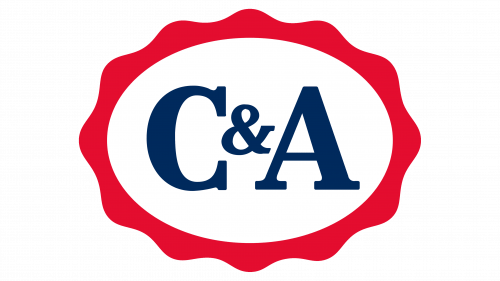C&A Logo
C&A is a retail clothing chain founded by two brothers. They established the company in the Netherlands. Their main goal was to offer affordable yet stylish clothing to the public. The brand has grown to serve customers globally.
Meaning and history
C&A, a global retail company, was founded in 1841 by brothers Clemens and August Brenninkmeijer in the Netherlands. Initially, it started as a small textile firm. The company revolutionized affordable fashion, introducing ready-to-wear clothing. By the 20th century, C&A expanded across Europe. It opened its first store outside Europe in Brazil in 1976. C&A was a pioneer in introducing sustainable materials in the 1990s. It operates in numerous countries, focusing on sustainability and affordability in fashion. The company continues to innovate in eco-friendly fashion, maintaining a strong market presence.
What is C&A?
C&A is a global retailer that sells fashion items. They focus on affordable apparel for families. The brand is known for its commitment to sustainable fashion.
1841 – 1912
The logo in the image is a classic emblem design featuring the initials “C&A” and the surname “Brenninkmeijer”. It includes the names of four Dutch cities: Amsterdam, Groningen, Leeuwarden, and Sneek, arranged in an elegant curve. The overall aesthetic is vintage, with sophisticated script fonts that emphasize tradition and heritage. The black and white color scheme adds to its timeless appeal. This design represents a storied connection to the brand’s origins and geographical roots.
1912 – 1913
This updated logo features a streamlined design compared to the previous one. The initials “C&A” remain prominent, but now the full name “Brenninkmeyer GmbH” is included underneath, emphasizing the corporate structure. The list of cities has been removed, focusing solely on the brand name and its corporate identity. This change suggests a shift towards a more modern, simplified branding approach, highlighting the company’s evolution from a local to a more formal corporate entity. The circular boundary remains, maintaining the emblematic quality.
1913 – 1928
In this version of the logo, the design has further evolved. The letters “C&A” are now larger and occupy more space within the circle, suggesting a stronger brand identity focus. The font style has also shifted to a more modern and bold typeface, which enhances readability and visual impact. “Brenninkmeyer GmbH” appears in a smaller, less elaborate font, streamlined below the main initials, maintaining a neat and orderly presentation. The overall look is cleaner and more focused, moving towards a contemporary aesthetic while retaining its classic circular frame.
1928 – 1947
The new logo introduces a bold, radiating pattern around the circle, creating a dynamic, sunburst effect. The initials “C&A” are prominently centered, with “MODES LIMITED” below, indicating a possible shift towards a more fashion-focused identity. The font is heavier and more block-like, suggesting strength and modernity. This design departs significantly from earlier iterations by using sharper lines and a more pronounced graphic element, aiming for a more eye-catching and contemporary look. The logo’s evolution marks a fresh phase in the brand’s visual presentation.
1947 – 1958
This iteration of the logo adds a new, playful flair. The “C&A” initials are maintained in a clean, bold font, emphasizing the brand’s name. Surrounding this, a decorative, scalloped edge with vertical stripes gives the logo a dynamic, more engaging look. The phrase “is tock voordeeliger!” adds a promotional message, indicating the brand’s value proposition, which translates to “is still more advantageous!” in Dutch. This message highlights the brand’s commitment to offering value to its customers, aligning the visual identity with a consumer-friendly appeal. The overall style shifts towards a more marketing-oriented, conversational approach.
1958 – 1984
This logo iteration introduces a dramatic redesign. It now features bold, diagonal red stripes around the perimeter, adding a dynamic energy. The center is a dark blue oval containing “C&A Brenninkmeyer”. The use of a two-tone color palette contrasts sharply with previous designs, giving a striking visual appeal. This style shift signifies a modern and perhaps more aggressive marketing approach. The inclusion of “Brenninkmeyer” directly in the logo re-emphasizes the family name and heritage, maintaining a connection to the brand’s roots while appealing to a contemporary audience.
1984 – 1998
This logo presents a significant stylistic shift, adopting a bold, flower-like silhouette with vibrant red and blue colors. The “C&A” text is now prominently placed in a blue center, surrounded by a red outline, creating a striking visual contrast. This design simplifies the previous complexity, focusing on color and shape to enhance brand recognition. The floral design could symbolize freshness and vitality, aligning with a brand image that appeals to a broad, family-oriented demographic. This logo aims for clarity and memorability in its visual appeal.
1998 – 2011
The logo has evolved to feature a more refined and simplified design. The dynamic, flower-like edges have been smoothed into a more regular, wave-like border, enhancing the logo’s elegance. The color palette remains a classic red and blue, but the tones are richer and deeper, creating a stronger visual impact. “C&A” is centrally placed within a blue circle, maintaining the brand’s identity prominently. This version emphasizes a timeless yet contemporary appeal, focusing on clear, bold simplicity to represent the brand effectively.
2005 – 2011
The logo modification introduces a 3D effect, adding depth and modernity. The wave-like border is now more pronounced with a glossy finish, enhancing visual impact. The blue central circle is darker, setting a stark contrast against the white “C&A” letters, which also appear more refined. These changes make the logo pop, aiming to catch the viewer’s eye more effectively. This design iteration emphasizes a more contemporary, appealing look that aligns with modern branding strategies.
2011 – 2020
The latest logo returns to a flat design, eliminating the previous 3D effects. The color contrast remains sharp, with the blue and red colors appearing vibrant. The “C&A” text stays prominently in the center, maintaining its legibility and significance. The wavy border, now simpler and less detailed, creates a clean, modern look. This reduction in stylistic complexity suggests a shift towards minimalism, focusing on straightforward and effective brand communication. This approach might appeal to a contemporary audience that favors clarity and modern aesthetics in branding.
2016 – 2020
The logo continues to evolve, now featuring a monochromatic red design. The previous blue circle is gone, simplifying the color scheme to a single vibrant red. The white text “C&A” remains central, ensuring brand recognition. The border retains its wavy design, but without the blue, the logo achieves a bolder, more striking appearance. This update signifies a modern and minimalistic approach, focusing on strong color contrast and simplicity to make the brand more visually impactful and memorable.
2020 – Today
The logo has undergone a drastic simplification, removing any border or background elements entirely. It now consists solely of the “C&A” text in bold, red letters. This minimalist approach enhances clarity and modern appeal, focusing entirely on the brand name. The design emphasizes strong visibility and brand recall through its straightforward and impactful presentation. This shift towards minimalism reflects a trend in corporate branding that prioritizes direct and efficient communication with consumers.























